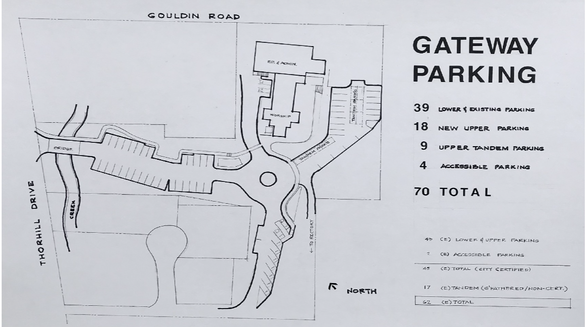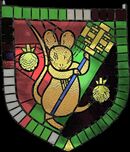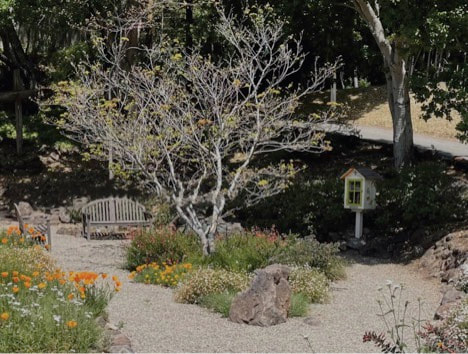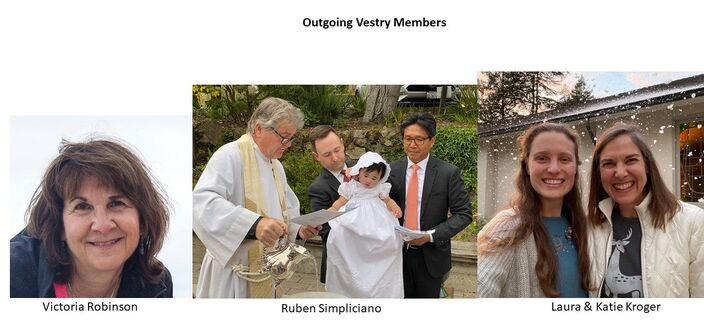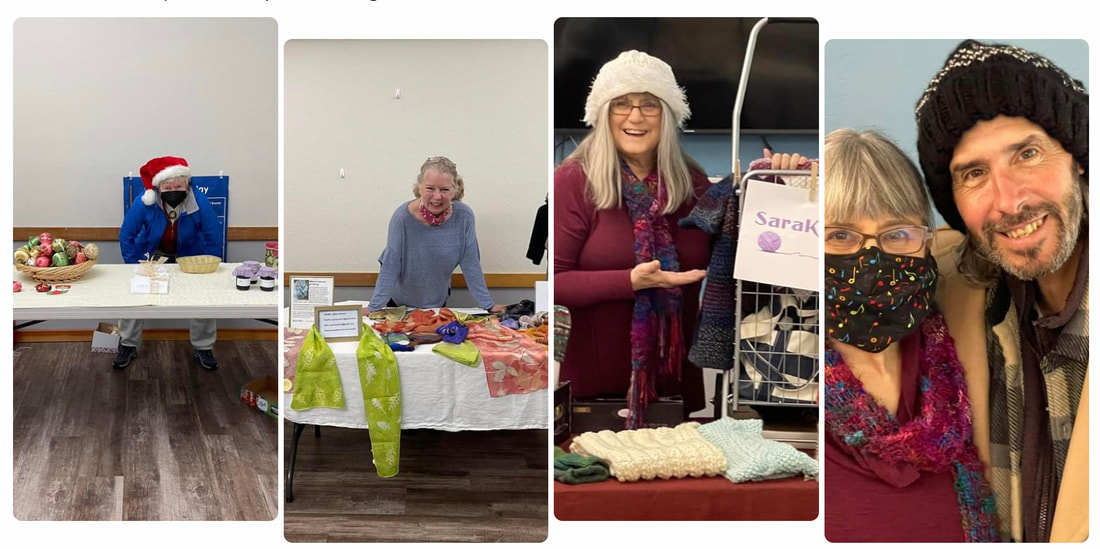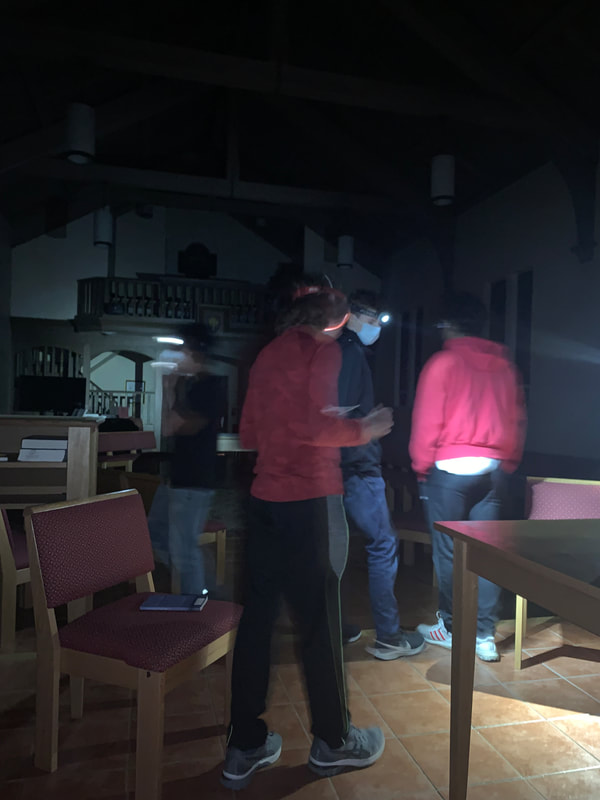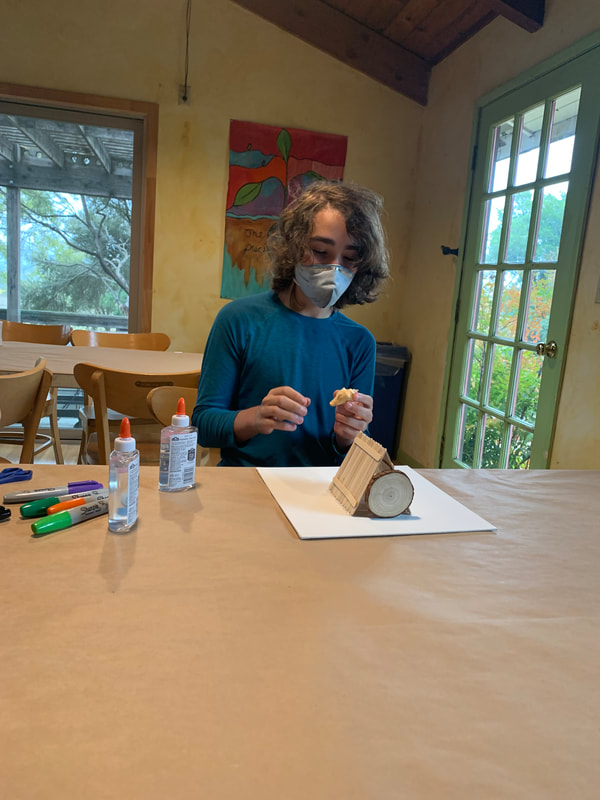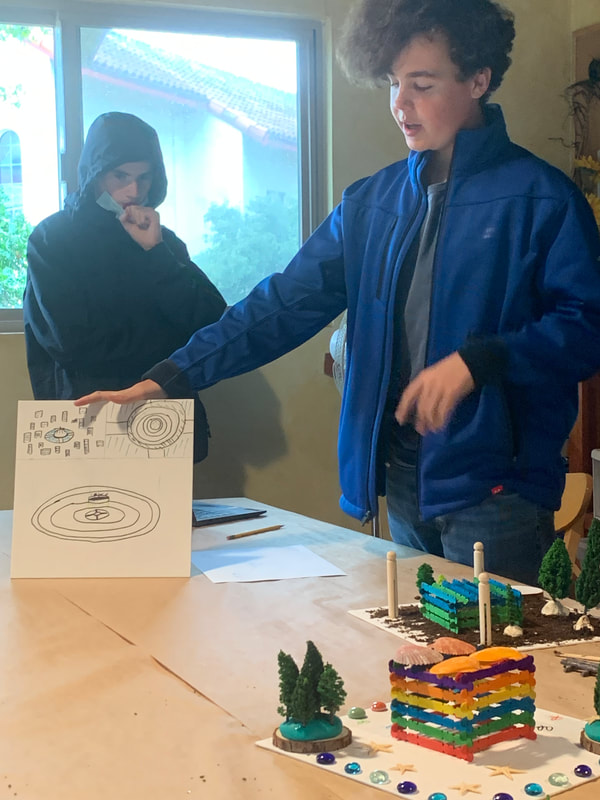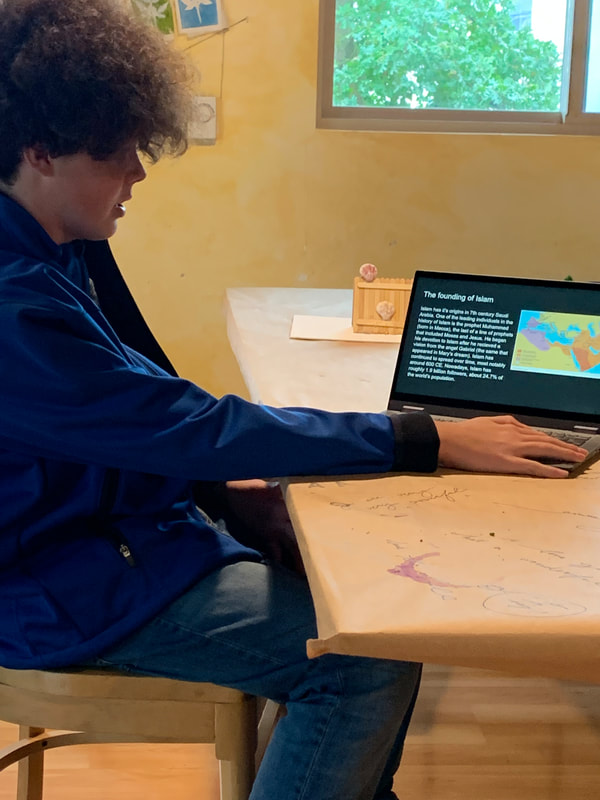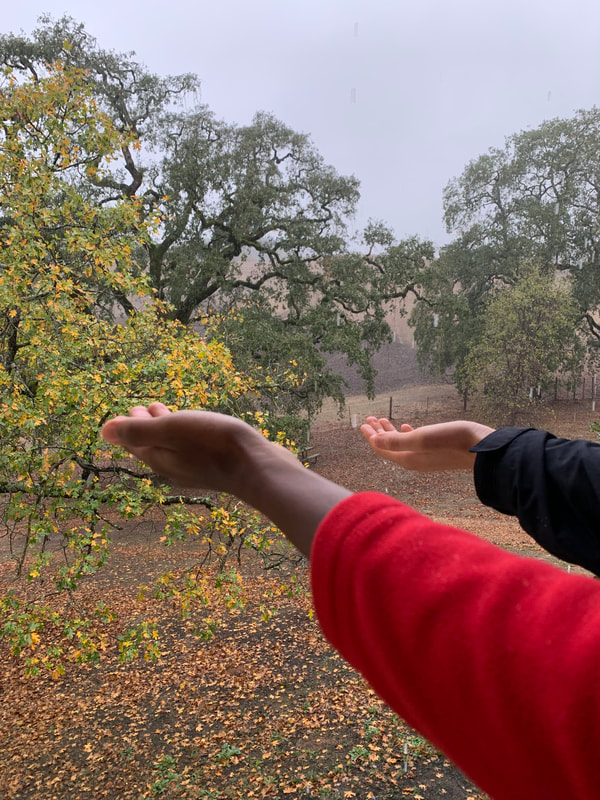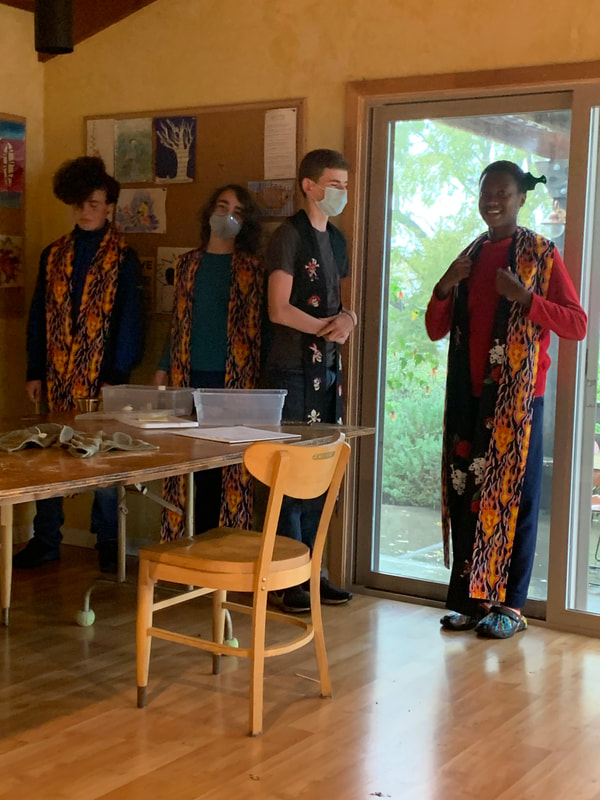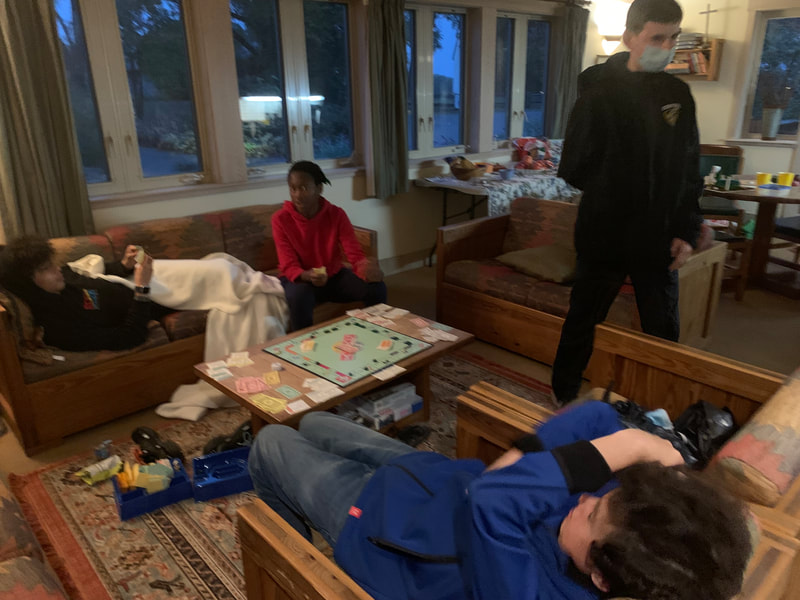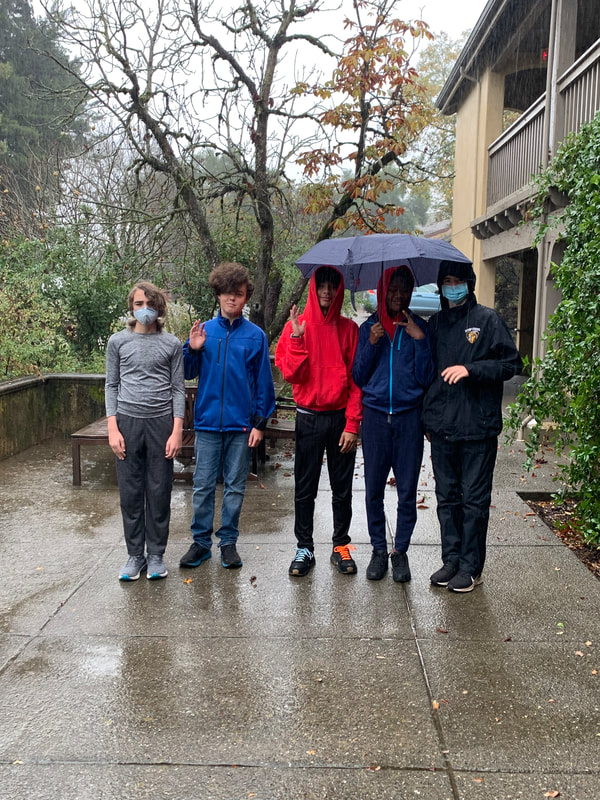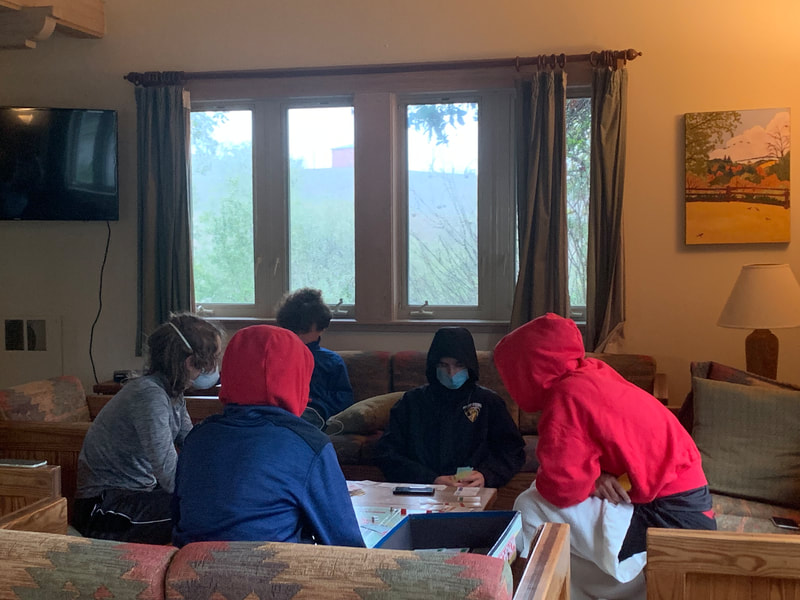|
You may have wondered how The Gateway Project will impact parking at St. John’s. Will the impact be a net positive, or will we lose parking spaces? How many accessible parking spaces will there be, and where will they be located? Bob Davidson created the graphic here that shows the layout and numbers of our future parking spaces compared to what we have now. This information is posted at church on the wall in the back hall by the kitchen. Check it out:
Parking Summary With The Gateway Project we will have a net increase of 8 parking spaces as well as 2 more accessible spaces. We currently have 43 regular spaces and 2 accessible spaces which are City certified, for a total of 45 certified spaces. With our 17 tandem parking spaces, which are not in compliance with City requirements, added to those 45 in compliance, we currently are able to park a total of 62 cars. The new future parking will consist of 57 regular spaces and 4 accessible spaces which are City certified for a total of 61 certified spaces. With 9 tandem parking spaces, which are not in compliance with City requirements, added to those 61 in compliance, we will be able to park a total of 70 cars.
0 Comments
By Julie Knell and Victoria Robinson
By now, many of you have met with a St. John’s “volunteer visitor” in preparation for Pledge Sundays, November 5 and 12. Word is out that these meetings have been informative, positive, and even inspiring. Always, they have been a reminder of the special community we share. 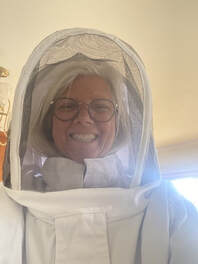 By Lilah Greene Sometimes analogies fit right in with the message you are conveying and sometimes they have a limited fit. Sometimes an analogy communicates in more ways than one. I feel that is what’s happening with this year’s Bee Generous campaign. I have written previously that the benefits of our community are like honey produced by our St. John’s hive. We ask you to support St. John’s with your pledge contribution so that we can continue to produce that wonderful honey. Our honey benefits our core community and beyond. St. John’s is a vital participant and presence in Montclair, Oakland, the Episcopal Church, and the world at large. This winter St. John’s engaged Ratcliff, a local architecture firm, to help create a master plan for our campus buildings and property. The goal is to develop a long-term plan for our campus, drawing on our prior investments in the invitation bridge and the work of the Campus Committee to optimize the safety, beauty and functionality of our property and facilities.
A search committee of church members selected Ratcliff for this project, based on their excellent reputation, knowledge of the area, and experience working with schools and churches. We expect to provide a full report to the Parish later this summer, with the architects on hand for a report and Q&A, and renderings of proposed improvements. A steering committee, chaired by Debi Stebbins, leads the project for St. John’s. In the first phase, Ratcliff met with the Vestry, steering committee and three user groups to establish priorities that support the Church’s mission and vision, as well as to review the “guiding principles” that inform our campus improvements. Approximately 20 church members participated in these sessions. Based on these discussions and guiding principles, the vestry approved a two-pronged approach. We are prioritizing improvements to the sanctuary and courtyard and a scaled back and less expensive version of the bridge project, which we have renamed the Gateway. Reflecting our guiding principles, the Gateway project dramatically improves the safety, access and approach to out campus. Improvements to the sanctuary and adjacent courtyard will provide a more flexible space that connects to the outdoors and capitalizes on the beauty of our campus. Ratcliff is working with Sandis, the engineering firm we used for the earlier work, and construction company Oliver & Co. to determine the costs and timetable for the proposed improvements and sequencing of the work. Concurrently a Project Financing Task Force co-chaired by Vestry member Ed Likely and David Brown, is exploring multiple options for financing the desired improvements. This summer we expect to have more details along with renderings to show possible redesigns. “The project will be multi-year, rather than something we can complete in the next one or two years,” according to Fr. Scott. “We are excited by the wholistic nature of this plan and process, which will give us a roadmap to the future.” Patricia Harden People's Warden Resolutions for Outgoing Vestry Members 2022
Katie Kroger: Whereas Katie Kroger courageously chose to join a board whose average age would be impolite to discuss, and whereas in doing so she injected youthful energy and vision in a time when we desperately needed it, and whereas the fruits of that energy and vision led to a beautiful transformation of our grounds under her leadership of the Landscape Committee, and whereas her vibrant spirit also inspired a vibrant re-branding of our church graphics, and whereas she also helped bring a new look to our worship helping design and produce our Saturday evening services, and whereas she did all of this even faster than she puts words together, and whereas she grew up at St. John’s and has continued to return the favor, helping us grow up in a challenging time, Be it resolved that Katie Kroger has hereby earned the title Saint of Saint John’s. Laura Kroger: Whereas Laura Kroger brought a true spirit of family to the vestry being the first person to serve on the vestry with her daughter, and whereas that sense of family is seen in the way she cares for our buildings and grounds, as if they were her own house and garden, and whereas all of her care of our campus and design of our Saturday service liturgy was grounded in her amazing sense of aesthetics, and whereas in bringing beauty to our campus she also faced off with contractors who had more than met their match, and whereas she was always extremely prepared for every meeting, having thoroughly studied each document, and whereas such attention to detail made her our most reliable proof-reader, and whereas she was the model of a team player, applying her amazing gifts to the vision of the vestry even if a given vision was not her cup of tea, and whereas the intensity she brought as she took on big projects was always grounded in a graceful spirit and gentle laughter, Be it resolved that Laura Kroger has hereby earned the title Saint of Saint John’s. Ruben Simpliciano: Whereas Ruben Simpliciano faithfully answered the call to become the People’s Warden, and whereas his patience, kindness and sense of humor always inspired the people he represented, and whereas he could magically create a sense of calm in the midst of intense conversation, and whereas it didn’t hurt that his one-year-old daughter Lillian often joined our meetings, and whereas he brought our agendas to new heights with his technological skill and his gifts of analysis, and whereas he is committed to supporting our staff, serving on the Personnel and Search Committees, and whereas in Zoom meetings his hair always looked amazing all the way through the pandemic, even as he juggled bottles, high chairs, nap times and computers, and whereas his presence in meetings made everyone feel like it was not just a meeting but a caring community, Be it resolved that Ruben Simpliciano has hereby earned the title Saint of Saint John’s. Victoria Robinson: Whereas Victoria Robinson had the courage to say Yes to being Senior Warden, and whereas that spirit of YES has set the tone for leading us all through a pandemic, and whereas her profound gifts and vision for development have inspired development on many levels, and whereas her first agenda item in every meeting is to ask how people are doing, and whereas her compassion and curiosity naturally inspire others to share their opinions, and whereas her humility and care have made her an inspirational consensus builder, and whereas her deep love for St. John’s and care about every detail leads to multiple texts and emails every day, and whereas she has managed to put up with constant meetings with the rector, and whereas she has done all of this with gratitude, humor, and great joy, seeming to get more out of things than she puts in, which can’t possibly be true, Be it resolved that Victoria Robinson has hereby earned the title Saint of Saint John’s. 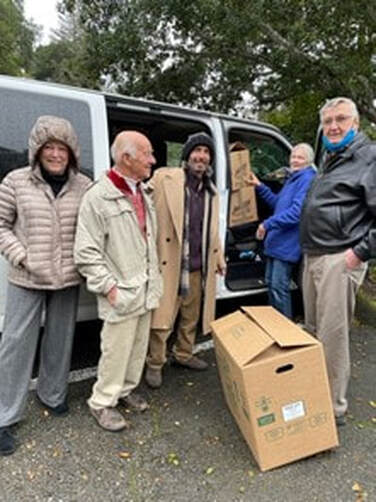 Many of you were present at St. John’s on December 12th, 2021, when Vinnie Pannizzo attended the service and gave a presentation explaining his work with the homeless. He is the “saint” who picks up our donation of meal bags and blankets/jackets every week on Thursdays. There was a craft fair that Sunday and all of the proceeds were given to either our VISION project or Vinnie’s organization: www.missionforthehomeless.org. Soon after that, Vinnie’s well-used van broke down. The complete cooling system (radiator, hoses, and water pump) had to be replaced. The VISION team was very pleased to be able to cover that expense ($1200) due to the generous donations from St. John’s parishioners. THANK YOU! The warm camel hair coat that Vinnie is wearing was also a donation from a caring member of St. John’s. Our 'Give and Gift Bazaar' last Sunday raised more than $1200 for VISION - and Pastor Vinnie (Mission for the Homeless) was eloquent and grateful! This benefit sale reflected our commitment to outreach ministries, while strengthening our own church community. From left: Laurie Bennett organized goodies from Silvia Sykes, the Slatoffs, and others, together with vintage gifts from Karen Gleason and Laurie's own grandmother; Sylvia Ahern sold her botanically-printed art scarves; master knitter Sara Evinger sold her creations - and donated 50+ other warm hats knit by her, Judi Marr, and Sylvia Ahern directly to Pastor Vinnie's ministry.
The CNC retreat is a time when youth going through the confirmation program learn to set up their own worship spaces and experience God. The do reports on world religions to understand what others believe and what makes that different from Episcopalians. They even have a little fun playing board games.
|

